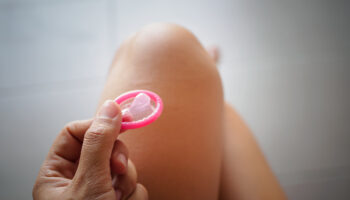Use-effectiveness is the actual effectiveness of birth contraceptive method, device, or medication. It differs from the theoretic effectiveness, as it takes human error into account. As it does not expect perfect use, use-effectiveness is usually lower than theoretic effectiveness.
Use-effectiveness is express as a percentage. The greater the use-effectiveness, the more reliable the contraception is.
More About Use-Effectiveness
The male condom is one of the most common forms of birth control. It has a theoretical effectiveness of 98 percent. That means that when they’re worn and used as instructed, they prevent pregnancy in 98 percent of cases. Yet, people are not perfect. Sometimes they fail to put on the condom correctly, increasing the chance of slippage or tears. This human error decreases the effectiveness rate, making the use-effectiveness of condoms 82 percent. That means that people who use condoms will not fall pregnant in 82 percent of cases. That means that it’s nine times more likely that people will fall pregnant using a condom in reality than the theoretical effectiveness rate suggests.
A similar discrepancy is seen with the contraceptive pill. Its theoretical effectiveness is very high at 99.7 percent. However, a number of factors can reduce its effectiveness. For example, the pill is most effective after it’s been taken for seven consecutive days. Women who rely on the pill as their only contraceptive after taking it for just a few days are more likely to fall pregnant. Women are also more likely to fall pregnant if they forget a pill, take it at different times, or suffer from diarrhea. All these factors reduce its use-effectiveness to 91 percent.
However, in some cases, use-effectiveness can be the same as theoretical effectiveness. As hormonal implants like Implanon and Nexplanon are administered by trained doctors, they do not suffer the same level of human error. Therefore, their use-effectiveness is the same as their theoretical effectiveness: 99.95 percent.
Use-effectiveness rates typically get closer to theoretical effectiveness rates over time. That’s because with practice, people tend to become better at using their preferred contraception.
Use-effectiveness rates treat all conceptions that occur while using contraception equally, whether they result in a birth, an abortion, or a miscarriage.
While theoretical effectiveness gives you some idea about how well a contraception will work, it’s imperative to also consider the use-effectiveness. Assess your own lifestyle and habits to decide whether your contraceptive’s effectiveness rate is more likely to be closer to the theoretical effectiveness or use-effectiveness rate. If you feel concerned about how effectively a contraceptive is likely to work for you, you may like to use an alternative method, either on its own or in conjunction with your preferred choice.



